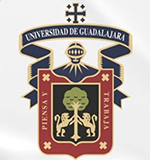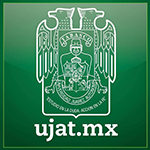Introduction to Juárez Autónoma de Tabasco University:
Introduction: Juárez Autónoma de Tabasco is a public institution of higher learning located in Villahermosa, Tabasco, Mexico. It is the largest and most influential university in the state, dedicated to training professionals to meet the development needs of Tabasco and the country as a whole.
Overview: In the 2022-2023 academic year, the school has 29,367 students, including 28,051 undergraduates, 1,256 postgraduates, 2,717 teaching staff, and 2,304 administrative staff. The school has multiple colleges and offers undergraduate, master's and doctoral programs in a variety of fields including arts and humanities, business and social sciences, engineering, health sciences, information technology, etc.
History: Its history dates back to 1861, when the governor of Tabasco asked President Benito Juarez for funds to build an educational institution at the secondary, preparatory and university levels to serve the local community, and the funds were approved a year later. On January 1, 1879, with the support of Governor Simón Zarate Nova and liberal politician and writer Manuel Sánchez Marmor, the institution opened to the public as the Juarez College, initially enrolling less than 100 students and offering nine subjects. On November 20, 1958, the Juarez College was renamed the Autonomous University of Tabasco. In December 1966, the school became an autonomous entity.
Establishment: 1879 (Juarez College was established), and officially became a university in 1958.
School Strength: The school is a member of the National Association of Higher Education Institutions of Mexico, and has certain strengths in teaching and research. The school focuses on cooperation with enterprises and social institutions to provide students with practical opportunities, and graduates have certain competitiveness in the local and national job markets.
Institutional nature: public university.
Educational philosophy: As a public higher education institution, it aims to contribute meaningfully to social transformation and national development through solid and comprehensive training of professional talents, with a particular focus on the development of Tabasco State. Focus on cultivating students' ability to acquire, generate, disseminate and apply scientific, technological and humanistic knowledge, and cultivate ethical and responsible talents to make them better individuals and citizens.
Key laboratories and disciplines: It is known for its majors such as agricultural sciences, biology and biochemistry, biotechnology and applied microbiology, chemical engineering and clinical medicine. Although there is no public information on outstanding key laboratories, there should be corresponding research facilities and experimental conditions in these advantageous disciplines to support teaching and scientific research.
Faculty: The school has several colleges, including the School of Life Sciences, the School of Education and Arts, the School of Engineering and Architecture, the School of Health Sciences, the School of Social Sciences and Humanities, the School of Informatics and Systems, the School of Economics and Management, the School of Basic Sciences, the School of Agricultural and Fishery Sciences, the School of Multidisciplinary Research, etc.
Ranking: 66 in the 2025 Latin America and Caribbean Central America Rankings and 351-400 in Latin America and the Caribbean.
Cost: No specific tuition information is available. Generally speaking, tuition fees at public universities are relatively low, and schools may provide scholarships, grants and other funding to help students.
Campus Environment: The campus is located in an urban area, covers an area of 1.5 square kilometers, and has modern teaching facilities, libraries, laboratories, etc. The campus architectural style may incorporate local characteristics, and there are also some historically significant buildings, providing students with a good learning and living environment.
-

National Autonomous University of Mexico
-

Anahuac University of North Mexico
-

Universidad Autonoma de Guadalajara
-

Universidad ETAC
-

Meritorious Autonomous University of Puebla
-

Technological University of Tulancingo
-

Metropolitan Autonomous University
-

Autonomous University of Sinaloa
-

University of Guadalajara
-

Technological University of Huejotzingo
-

Mesoamerican University
-

Istmo University
-

Mariano Galvez University of Guatemala
-

Regional University of Guatemala
-

Galileo University
-

Francisco Marroquín University
-

Rafael Landívar University
-

University of the Valley of Guatemala
-

University of San Carlos of Guatemala
-

Technological Institute of Tlaxcala Plateau
-

Golfo University
-

Technological University of South Sonora
-

Technological University of Huejotzingo
-

Tizimín Institute of Technology
-

Chilpancingo Institute of Technology

